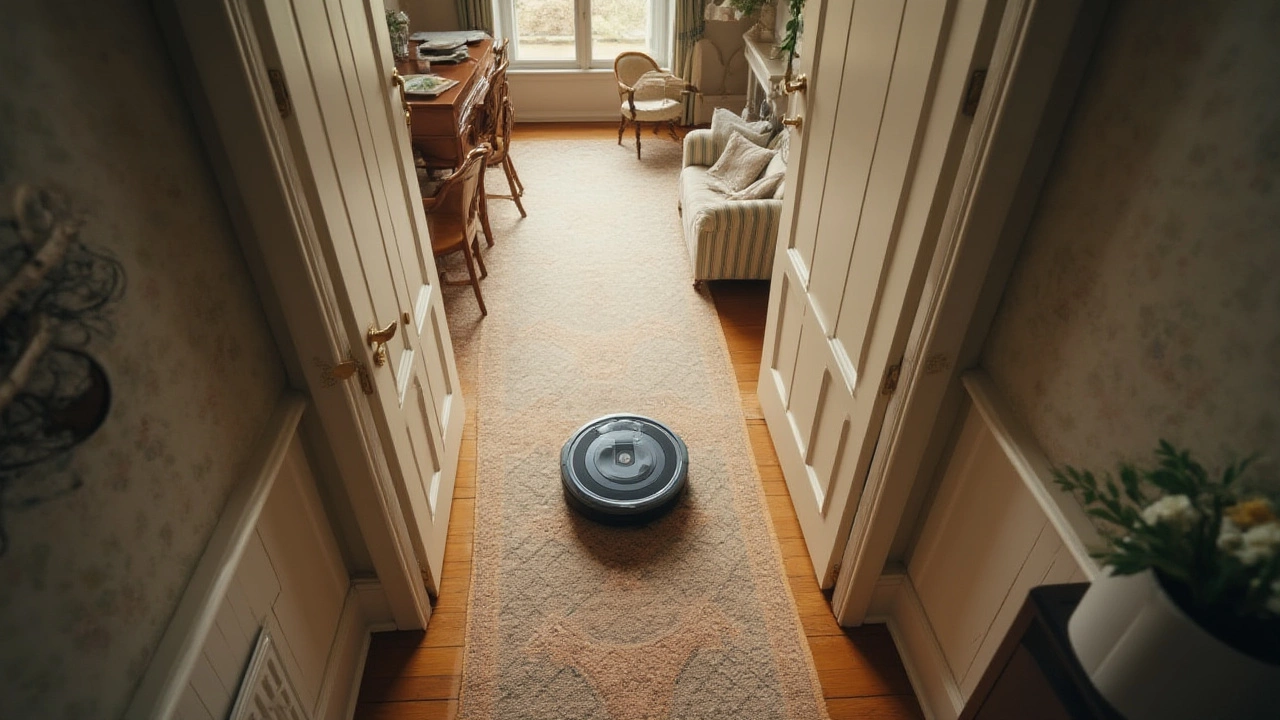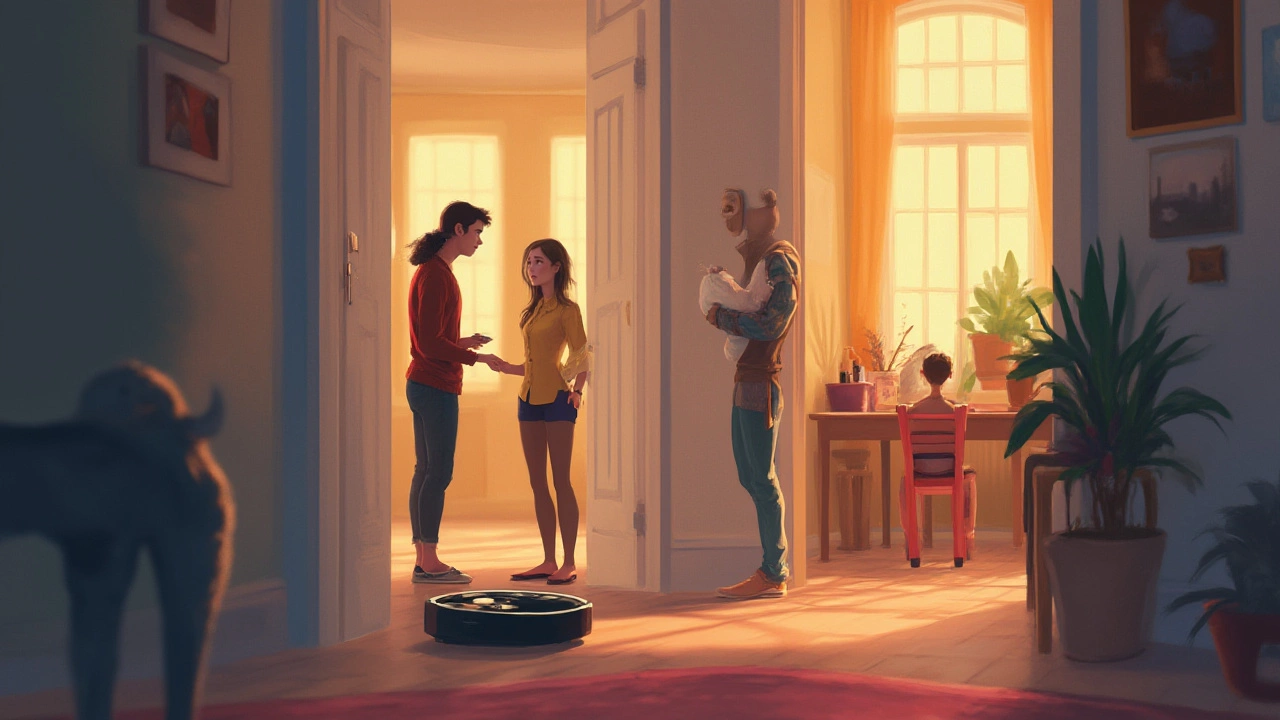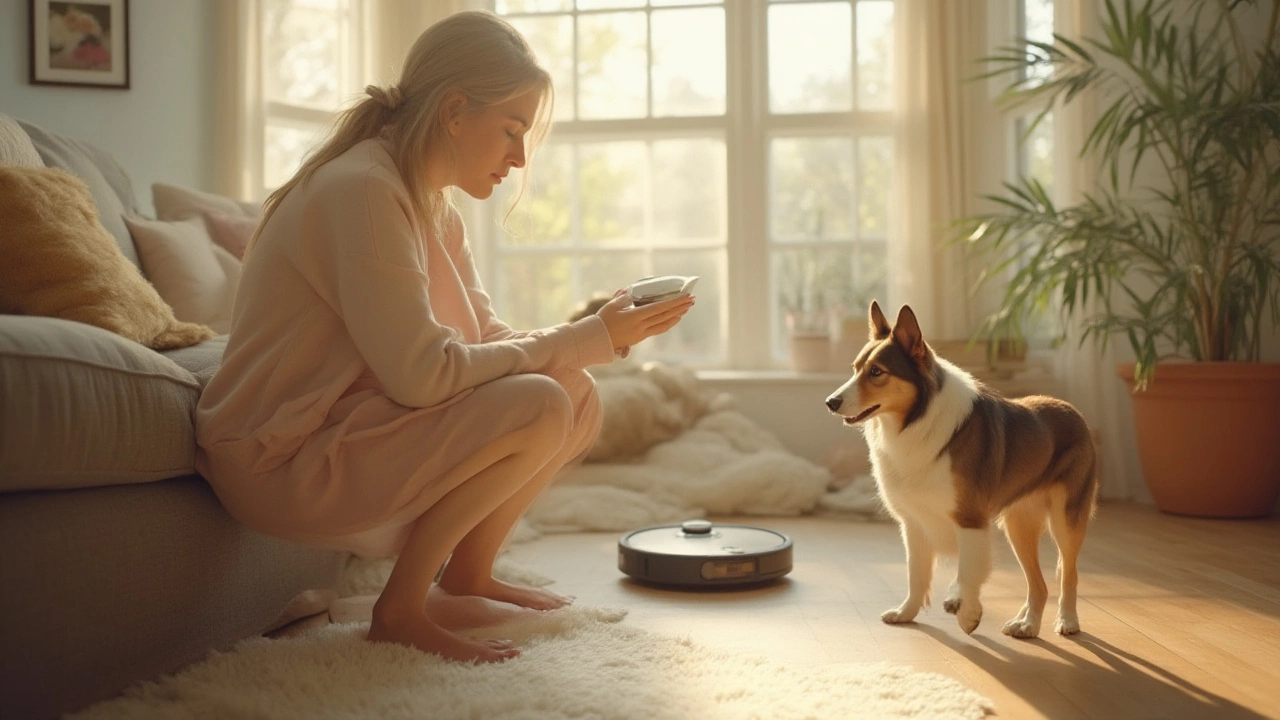Ever watched your Roomba working its way around your living room and wondered, “What would happen if I just picked it up and moved it to another room?” You wouldn’t be the first. Maybe you need the spare room vacuumed but don’t have the time or energy to set up a new cleaning schedule. Or your Roomba keeps getting stuck on that one rug, so you start thinking about relocating it mid-clean. But is it actually a good idea? And what’s the best way to do it if you want your robot friend to keep running smoothly? Real talk—there are a few things to know before you go grabbing your Roomba by the handle and plopping it somewhere new. Let’s get into it.
How Roomba Navigates: Maps, Sensors, and Surprises
Roomba vacuums have come a long way from their early days of blindly bumping into furniture. Modern models, from the entry-level Roomba 600 series to the laser-mapping wonders of the s9+ and j7+, rely on a mix of sensors, cameras, and algorithms to work out where they are, where they've been, and where they're going next. So, what actually happens inside your Roomba's "brain" when you pick it up and move it?
Let’s say you grab your Roomba in the middle of its cleaning cycle and carry it to the guest room. The sensors pick up new obstacles, the wheels hit unfamiliar textures, and the built-in map doesn’t match what’s in front of its camera. Roombas using Imprint Smart Mapping (like the i7, s9, and j series) take snapshots of your home’s layout and save them. These are the models that let you send Roomba to specific rooms through an app or a smart speaker. Older or simpler models like the 600 or e-series go by feel—they track where they’ve been using sensors but don’t actually remember maps from one run to the next.
So if you plop a mapping Roomba down somewhere unfamiliar, it gets confused. These Roombas expect a map that matches and can panic—sometimes stopping and showing a red light or error. More basic models might just treat it as a brand new cleaning cycle: “Hey, new room, let’s start from scratch.” That sounds convenient, but here’s the catch: If you move the Roomba and want it to eventually find its way home to the dock for charging, it probably won’t. Why? Because when Roomba starts a job, it stores its starting location. If that location changes, it can’t retrace its steps—imagine being blindfolded, spun around, and dropped somewhere unfamiliar. Even Roombas with fancy mapping can lose track and fail to dock when moved mid-clean.
Most Roombas have built-in cliff sensors (to prevent dramatic tumbles down stairs), bump sensors, and sometimes even optical flow sensors (these track movement over textured floors). Some models use a camera on top to “see” the room layout—these are the ones most annoyed by surprise moves. For these smart Roombas, picking them up and moving them to another room can mess up their internal map and confuse their navigation. Think of it like waking up in someone else’s apartment with no memory of how you got there—it’s possible to figure things out, but much slower and messier, especially if you’re a robot.
Lifting the Roomba and putting it somewhere new doesn’t damage the device or erase its map—but it does disrupt its workflow. If you move it during a scheduled clean, it either tries to finish up or, if it gets really confused, gives up. Don’t be surprised if it makes weird circles or spends a lot of time bumping into walls. Interestingly, the original Roomba models (think pre-2015) had no clue what floor they were on or which side of the house they’d landed—so people used to move them around all the time. Back then, if you wanted a room done, you’d just set the Roomba down and let it loose, no docking, no mapping, zero stress.

When (and How) You Can Safely Move a Roomba
Quick answer: Yes, you can pick up your Roomba and put it in another room. The real question is whether you should. If your Roomba is a non-mapping model or you simply want to do a one-time clean, it’s usually fine—just know it won’t make its way back to the original dock unless you carry it home. If you have a mapping Roomba with Virtual Walls, Smart Maps, or Room Select, moving it mid-clean will almost always throw off the system. Sometimes it’ll try cleaning as best it can, but more often you’ll get error messages or a Roomba that just spins in place looking for its bearings.
If you just want your Roomba to clean a single room that’s far from its dock, there are some smart ways to do it:
- For older, non-mapping Roombas: Set up any physical barriers you want—close the door to keep it in the target room. Place Roomba in the middle of the floor, press “Clean,” and let it do its job. When it finishes, it might chirp and stop, but it won’t make its way back to the dock. Just carry it back for charging.
- For mapping Roombas with Imprint Smart Maps (i7, s9, j7, etc.): Use the app to create a custom job for a single room. As long as the room is on the map and doorways are clear, Roomba should handle it just fine—no need to move the device. If you must move it, end the cleaning job first. Place it in the new room, start a new job, and know you’ll have to return it to the dock yourself.
- If Roomba gets stuck or can’t find home, the quick fix is to place it physically on the dock. Most units reset their starting point once they’re docked and recharged.
There are useful hacks, too. For example, if you’re deep cleaning and want to hit a spot fast, you can use the “Spot Clean” function (that target button with a little bullseye symbol). You pick up the Roomba, set it down where the mess is, hit “Spot Clean,” and it’ll spiral out over the area, then stop. This mode doesn’t rely on the saved map or docking. Super handy for specific spills, like dropped cereal by the kitchen table.
If you live in a multi-story house, some Roombas are totally fine working on multiple floors, as long as you create a map for each. Models with multi-floor mapping can store different layouts—so you pick up your Roomba, carry it to another level, and select the appropriate map in the app. No base on that floor? Just remember to bring your Roomba back down to its main dock or get a second dock for upstairs (compatible with the model, of course).
People who own more than one Roomba can get creative. Some folks dedicate a Roomba to each floor or larger room, while others just move a single device and use “Guest Docking” (placing an extra dock in the remote room, if supported). It’s not always seamless, but it gets the job done if you’re determined to get every inch vacuumed without moving heavy furniture or extension cords for a traditional vacuum.

Troubleshooting: How to Avoid Navigation Drama
You yanked your Roomba mid-clean, and now it’s having a meltdown. Maybe it’s blinking lights, refusing to dock, announcing, “Uh-oh!” in robot voice. Here’s how to get things back on track and keep your Roomba happy for next time.
- If you moved a non-mapping model, just carry it to the dock when finished. It won’t remember the journey—sometimes, ignorance really is bliss.
- If you’ve got a mapping Roomba, first end any running cleaning job in the app. Return the Roomba to its dock manually. Let it “reset” for a moment before you ask it to start again.
- Still lost? Try resetting your Roomba: Hold down the “Clean” button for 20 seconds (this varies by model), or check the manual for a model-specific soft reset. This usually clears any confusion and sets Roomba up for its next adventure.
- Keep the dock and surroundings clear. Roomba’s docking sensors need a wide area to lock on. If it’s surrounded by shoes or chairs, or the dock is right next to stairs, Roomba gets nervous and can’t home in on the base signal.
- Use the app’s “Find My Roomba” function if you lost your little buddy somewhere under a couch or behind a table. Most newer models sound an alert or blink until you retrieve them.
Want to keep your Roomba from getting confused next time? Start it on its dock, let it begin each cleaning job from the base station, and try not to physically relocate it when it’s up and running. If you do absolutely have to move it—say, the baby is napping, or you’ve got a guest on a Zoom call—pause the clean, move Roomba, then restart. Just expect it may not return itself to base at the end.
One fun fact: Roomba’s creators, iRobot, have been working on “AI navigation” that makes robots smarter about sudden surprises. The latest j7+ model will even recognize shoes, cables, or pet accidents, tag them as "no-go" zones, and reroute in real time. But even the smartest Roomba can’t teleport or perfectly reorient if relocated mid-task. If you want seamless transitions between rooms and floors, pick a model with multi-floor mapping, use the app to direct traffic, and avoid picking up your robot like a suitcase mid-job. Or, if you’re old school, treat Roomba like a glorified RC car—pick it up, let it clean, and carry it home for a well-earned recharge.
Long story short: You’re the one calling the shots. If you need to move your Roomba across rooms, it won’t harm the robot or your floors—but don’t expect flawless navigation, especially if it relies on saved maps. The smartest, least frustrating workflow? Let Roomba handle the mapping, create jobs for each room, and leave the heavy lifting (and sense of direction) to the robot. But if you’re in a rush or stuck with a stubborn spot, a good old manual move works just fine—you just might have to play chauffeur when it’s time for a pit stop at the dock.

